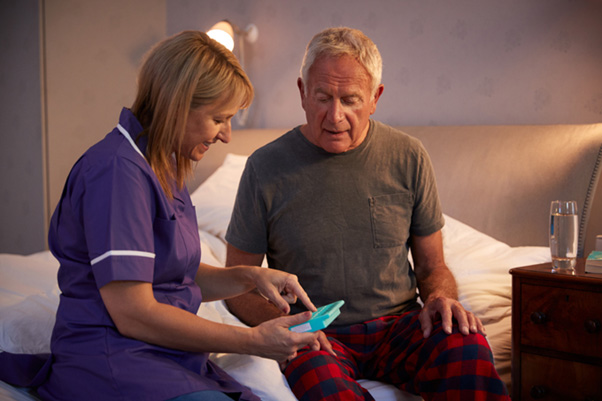Lighting cuts symptoms of Alzheimer’s patients

THE RIGHT lighting can reduce the symptoms of Alzheimer’s patients, a study has found.
The conclusion of investigation – by the Lighting Research Center in New York – is that the lighting in long-term care facilities is usually not bright enough during the day and ‘perhaps too bright’ during the evening.
The project was funded by the National Institute on Aging and was led by Dr. Mariana Figueiro, professor and director at the Lighting Research Center at Rensselaer Polytechnic Institute (pictured left).
Using light which helped stimulate the sleep-wake cycle of 46 people living with Alzheimer’s and other dementias improved sleep and cut depression and agitation.
The conclusion of investigation – by the Lighting Research Center in New York – is that the lighting in long-term care facilities is usually not bright enough during the day and ‘perhaps too bright’ during the evening.
Typical indoor lighting provides less than 100 lux at the eye, whereas being outside on a sunny day will provide anywhere from 1,000 to more than 10,000 lux at the eye.
Older adults in long-term care facilities often spend their days and nights in dimly-lit rooms with minimal time spent outdoors, and thus, they are not experiencing the robust daily patterns of light and dark that synchronise the body’s circadian clock to local sunrise and sunset.
Therefore, say the scientists, it’s understandable that many older adults in long-term care facilities are plagued by insomnia and other sleep disorders—yet, sleep could not be more important to their overall health and wellbeing.
Recent research has shown that poor sleep may directly impact the onset and progression of Alzheimer’s disease, and conversely, healthy, regular sleep patterns may prevent or slow progression of the disease.
The researchers used a variety of light sources including as free-standing luminaires, light boxes, and light tables to deliver the tailored, individualised lighting.
The lighting for the trial – which took place over a 14-week period – saw patients given a circadian stimulus of 0.4.
The project was funded by the National Institute on Aging and was led by Dr. Mariana Figueiro, professor and director at the Lighting Research Center at Rensselaer Polytechnic Institute.
She is probing whether a tailored lighting intervention can lessen the impact of these symptoms in older adults living with Alzheimer’s disease and related dementias.
The 24-hour light and dark pattern strongly determines a person’s sleep–wake (circadian) cycle, telling the body when to go to sleep and when to wake up. Studies have demonstrated that daytime light exposure of CS > 0.3 (approx. 350–500 lux at the eyes) can improve nighttime sleep efficiency and increase daytime wakefulness by promoting circadian entrainment.
Older adults with Alzheimer’s and other dementias experience severe dysfunctions of their sleep–wake cycle that include excessive daytime sleepiness, nocturnal wandering, agitation, irritability, day–night reversal and decreased cognitive functioning.
Sleep problems are exacerbated in patients, whose circadian rhythms can become less consolidated, as manifested in increased nocturnal wandering.
They are also at higher risk of depression and agitation.
These disturbances can lead to their placement in long-term care facilities, where they experience even greater inactivity and reduced exposure to daytime circadian-effective light, exacerbating their symptoms further.
As featured in Lux Review – December 2019

